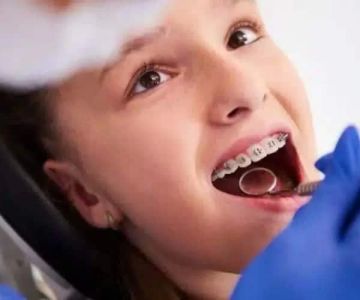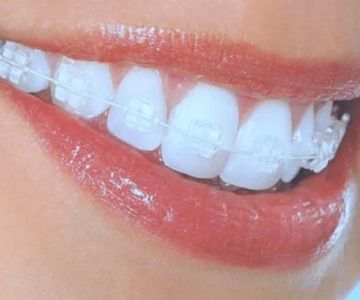Non-Surgical Treatments for Occlusion and Jaw Alignment Issues
When it comes to dental health, occlusion and jaw alignment issues are common concerns for many individuals. These conditions, often unnoticed, can lead to discomfort and affect overall quality of life. Fortunately, non-surgical treatments offer effective solutions for many patients, providing relief and improvement without the need for invasive procedures. This article will explore various non-surgical options available for managing occlusion and jaw alignment issues in the United States, highlighting their benefits and key considerations.
Introduction to Occlusion and Jaw Alignment Issues
The oral cavity's structure is intricate, with occlusion referring to how teeth come together while alignment focuses on the proper positioning of the jaw. Issues like overbites, underbites, and crossbites fall under malocclusion, and when left untreated, they can lead to symptoms such as jaw pain, headaches, and even temporomandibular joint disorder (TMJD). Understanding the prevalence and impact of these conditions is crucial for seeking timely treatment.
The Role of Orthodontic Appliances
Orthodontic appliances, such as braces and clear aligners, are among the most effective non-surgical treatments for correcting malocclusion. Braces have evolved significantly over the years, with options like ceramic braces offering a more discreet appearance. Clear aligners, popularized by brands such as Invisalign, provide a flexible, almost invisible solution suitable for minor to moderate alignment issues.
Behavioral Therapy and Lifestyle Changes
In addition to devices, behavioral therapy can play a significant role in alleviating symptoms associated with jaw misalignment. Techniques such as jaw exercises, posture training, and stress management can help reduce tension in the jaw muscles, promote proper jaw function, and prevent exacerbation of symptoms.
Physical Therapy and Orthotics
Physical therapy for the jaw includes techniques such as manual therapy and exercises tailored to improve jaw mobility, strength, and function. Dental splints or orthotics can be custom-made to fit the mouth, offering support and repositioning the jaw gradually. These tools are especially beneficial for patients with TMJD and associated pain symptoms.
The Role of Pharmacological Interventions
Medications, while not a standalone solution, can alleviate discomfort and inflammation associated with jaw misalignment. Muscle relaxants, anti-inflammatories, and analgesics can be prescribed as part of a comprehensive treatment plan, making it easier for patients to adhere to physical therapy and orthodontic regimens.
Innovative Technologies in Jaw Alignment
Technological advancements continue to pave the way for innovative solutions in dental care. Devices such as TENS (Transcutaneous Electrical Nerve Stimulation) units offer non-invasive options for pain management and muscle relaxation. Emerging techniques, like bite correction devices and digital orthodontics, represent the future of non-surgical treatment methods.
Conclusion: Moving Forward with Non-Surgical Treatments
For those struggling with occlusion and jaw alignment issues, non-surgical interventions offer a range of options tailored to individual needs. It's essential to consult with dental professionals who understand advancements in non-surgical techniques, such as those available at Dentistry Toothtruth, ensuring you receive the most appropriate and effective treatment. By exploring these non-invasive avenues, individuals can achieve significant improvements in oral health and overall well-being. Taking proactive steps to address these issues can lead to a healthier, more comfortable life.




 Westgate Dental Arts
Westgate Dental Arts Coventry Family Dental
Coventry Family Dental Familia Dental
Familia Dental Dr. Daniel S. Fife, DDS
Dr. Daniel S. Fife, DDS Dentistry At Suburban Square: Michael I. Wollock, DMD
Dentistry At Suburban Square: Michael I. Wollock, DMD Comfort Care Dental
Comfort Care Dental The Importance of Oral Health Education During Pregnancy for a Healthy Pregnancy
The Importance of Oral Health Education During Pregnancy for a Healthy Pregnancy Why Skipping Dental Checkups Can Lead to Bigger Oral Health Problems
Why Skipping Dental Checkups Can Lead to Bigger Oral Health Problems Best Tips for Brushing Your Teeth Properly for Healthy Gums: Essential Techniques for Oral Health
Best Tips for Brushing Your Teeth Properly for Healthy Gums: Essential Techniques for Oral Health Advantages of Porcelain Dental Restorations
Advantages of Porcelain Dental Restorations How Can Diabetes Cause Tooth and Gum Problems? Preventing and Managing Oral Health Issues
How Can Diabetes Cause Tooth and Gum Problems? Preventing and Managing Oral Health Issues Healthy Habits for Promoting Good Oral Health and Hygiene: Tips for a Healthy Smile
Healthy Habits for Promoting Good Oral Health and Hygiene: Tips for a Healthy Smile